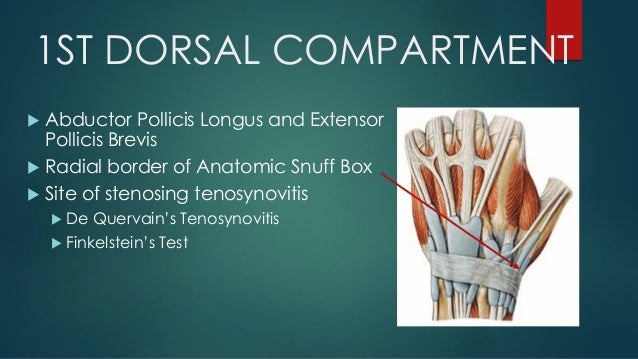
The outside or lateral “bump” just above the elbow is called the lateral epicondyle and is the site where most of the muscles that straighten the fingers and wrist come together in one tendon to attach. The muscles of the forearm cross the elbow and attach to the humerus – the lateral, or outside, part of the elbow, which is often the source of lateral epicondylitis, or tennis elbow. The triceps tendon connects the large triceps muscle to the ulna at the back of the arm and allows the elbow to straighten. The biceps tendon attaches the large biceps muscle to the radius at the front of the arm and allows the elbow to bend. Those tendons playing a large role in the stability and function of the elbow include the biceps and triceps tendons. The muscles assisting these movements, and their corresponding nerve and vascular supplies are located within the compartments of the arm – the anterior or flexor compartment and the posterior or extensor compartment. The ligaments, which connect bones to bones, form a joint capsule at the elbow joint – providing a lubricating synovial fluid. Ligaments at the front, back and sides of the elbow work to assist in stabilizing the joint, which is surrounded and lined by articular cartilage that provides a cushion between bones and facilitates movement. And the unique positioning and relationship between the bones in this joint permits a limited amount of rotation. The two movements that can occur at this joint are flexion and extension. Identified as a hinge joint, the elbow runs between the lower end of the humerus bone in the upper arm and the radius and ulnar bones of the lower arm. While the forearm does not sustain nearly as many injuries as the wrist or other parts of the upper body, a fracture of the distal radius is among the most common forearm injuries – resulting from sports-related trauma as well as that sustained from auto or recreational accidents. On the opposite side of the forearm sit the extensor muscles, which facilitate bending of the wrist towards the back of the hand.

They also permit the action of lifting, grasping and holding, as well as the bending of the wrist towards the palm. Those muscles located on the palmer side of the forearm are called the flexor muscles and allow the fingers to curl towards the palm. Those muscles lying diagonally near the elbow and wrist play a large role in facilitating the forearm’s twisting motions. Most of the muscles in the forearm run nearly parallel to one another – originating near the elbow and extending to the tips of the fingers.

The forearm connects the elbow with the wrist and can be divided into two compartments – the anterior or flexor compartment and the posterior or extensor compartment. The ulna extends from the elbow to the wrist on the side opposing the thumb – and runs medially (towards the middle) and parallel to the radius – articulating (joining) the humerus at the elbow as a hinge joint, the radius, near the elbow, to form a pivot joint, and the distal radius where it rests in the ulna notch. Though, its lower end is large and creates the more significant part of the wrist joint. The upper end of the radius is small and creates only a portion of the elbow joint. The radius is the forearm bone that extends from the inside of the elbow to the thumb side of the wrist – and is situated laterally to the ulna, which is larger in both size and length. A structure of the upper limb, the forearm is comprised of two long bones called the radius and the ulna.


 0 kommentar(er)
0 kommentar(er)
